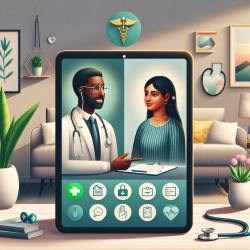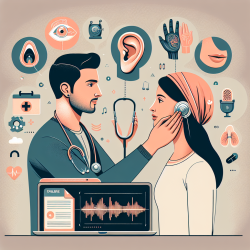In today’s rapidly evolving world, the healthcare sector is experiencing a significant transformation, thanks in large part to the advent of telepractice and telehealth. These innovations have revolutionized the way therapy and healthcare services are delivered, making it more accessible, cost-effective, and, importantly, safe. As we navigate through these changes, it’s crucial for government health regulators to understand and embrace the potential of telepractice, especially in providing therapy services to diverse populations. This blog aims to explore the safety, efficacy, and benefits of telepractice, inspiring a move towards its wider acceptance and integration into our healthcare systems.
Telepractice, or the delivery of therapy services via telecommunication technology, offers a promising solution to many of the challenges faced by traditional therapy settings. For government health regulators, the primary concern with any healthcare service is ensuring it is safe and beneficial for the public. Let’s delve into how telepractice meets these criteria, particularly in the context of providing therapy services in educational settings.
Firstly, telepractice significantly reduces physical barriers to accessing therapy. For individuals in remote or underserved areas, the traditional model of in-person therapy is not always feasible. Telepractice eliminates the need for travel, making it easier for individuals to access the care they need. This not only improves the availability of therapy services but also ensures continuity of care, which is crucial for effective treatment outcomes. Furthermore, by reducing the need for physical infrastructure, telepractice can lower the costs associated with delivering therapy services, making it a cost-effective solution for both providers and clients.
Safety is paramount in any healthcare delivery model, and telepractice excels in this aspect. By facilitating therapy sessions remotely, it minimizes the risk of physical harm to both therapists and clients. This is particularly relevant in the current global context, where minimizing physical contact is essential to prevent the spread of infectious diseases. Telepractice also offers a secure platform for therapy sessions, with stringent data protection measures in place to ensure confidentiality and privacy. These safety features are critical for building trust and ensuring the wellbeing of clients.
One of the key concerns for government health regulators is the efficacy of telepractice compared to traditional therapy methods. Numerous studies have demonstrated that telepractice can be just as effective, if not more so, in certain cases. For example, research in the field of speech therapy has shown that telepractice sessions can produce outcomes comparable to in-person therapy. This is largely due to the interactive nature of telecommunication technology, which allows for real-time feedback and engagement. Additionally, telepractice can lead to higher rates of client satisfaction, as it offers greater flexibility and convenience.
For telepractice to reach its full potential, however, it is crucial that there are robust regulatory frameworks in place. Government health regulators play a vital role in this regard, ensuring that telepractice services meet the highest standards of quality and safety. This includes establishing guidelines for the accreditation of telepractice providers, setting standards for technology and data security, and developing protocols for the delivery of therapy services. By implementing these measures, regulators can help foster an environment where telepractice can thrive, benefiting both providers and clients.
Moreover, embracing telepractice can lead to significant advancements in the healthcare sector. For instance, telepractice can facilitate the collection and analysis of data on therapy outcomes, which can inform best practices and drive improvements in care. It also offers a platform for innovation, encouraging the development of new therapy techniques and tools that can enhance the effectiveness of treatment. By supporting the growth of telepractice, government health regulators can play a key role in shaping the future of therapy services.
In conclusion, telepractice represents a safe, effective, and innovative solution for meeting the therapy needs of today’s population. For government health regulators, the challenge lies in creating a supportive regulatory environment that ensures the safety and efficacy of telepractice services. By doing so, they can unlock the full potential of telepractice, making therapy more accessible, cost-effective, and beneficial for all. As we move forward, let us embrace the opportunities presented by telepractice, inspired by its promise to transform the landscape of therapy services for the better.










